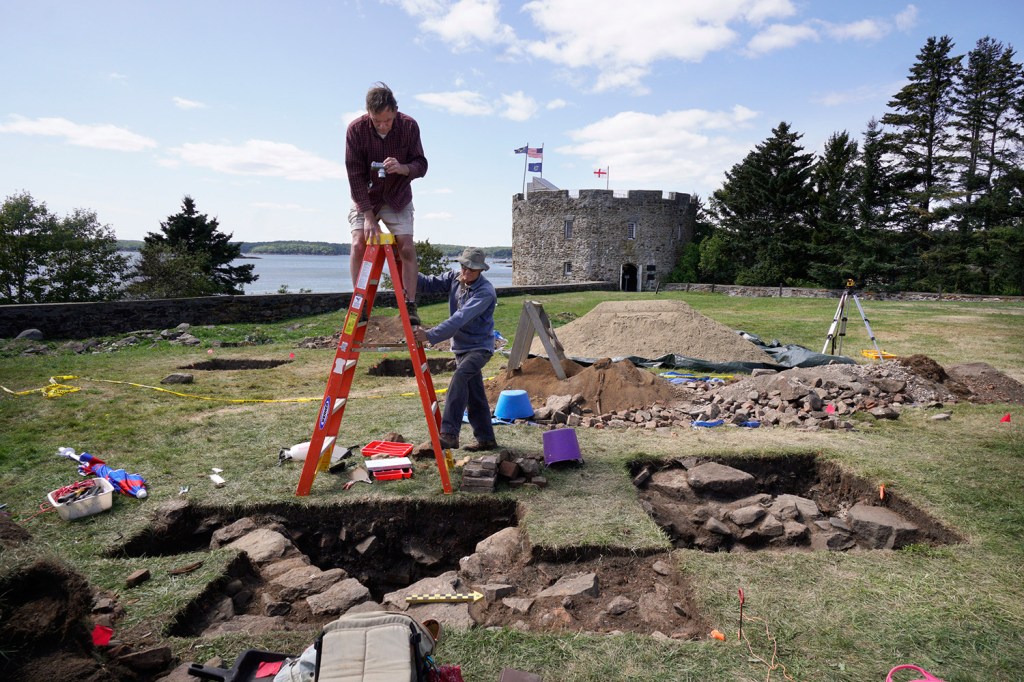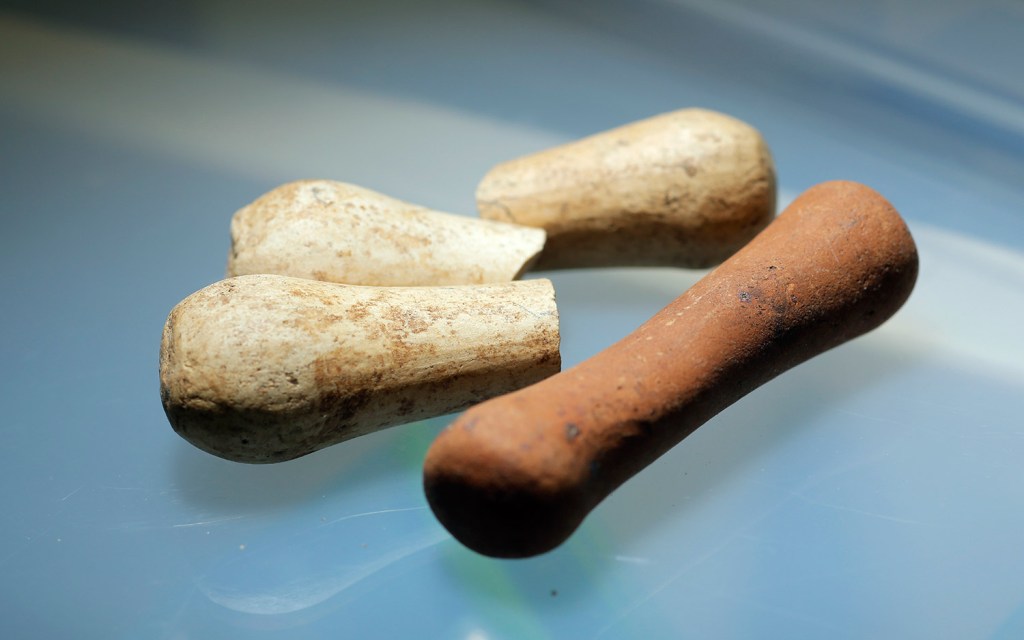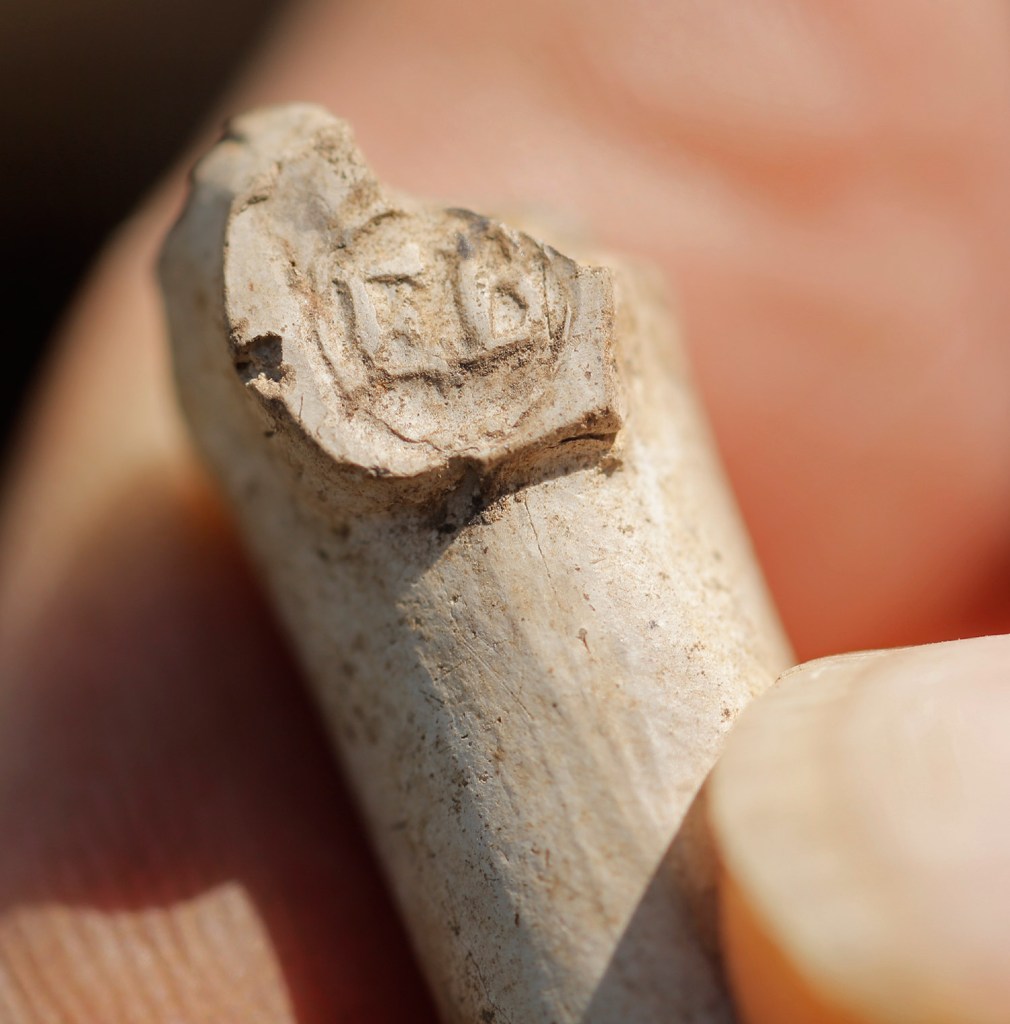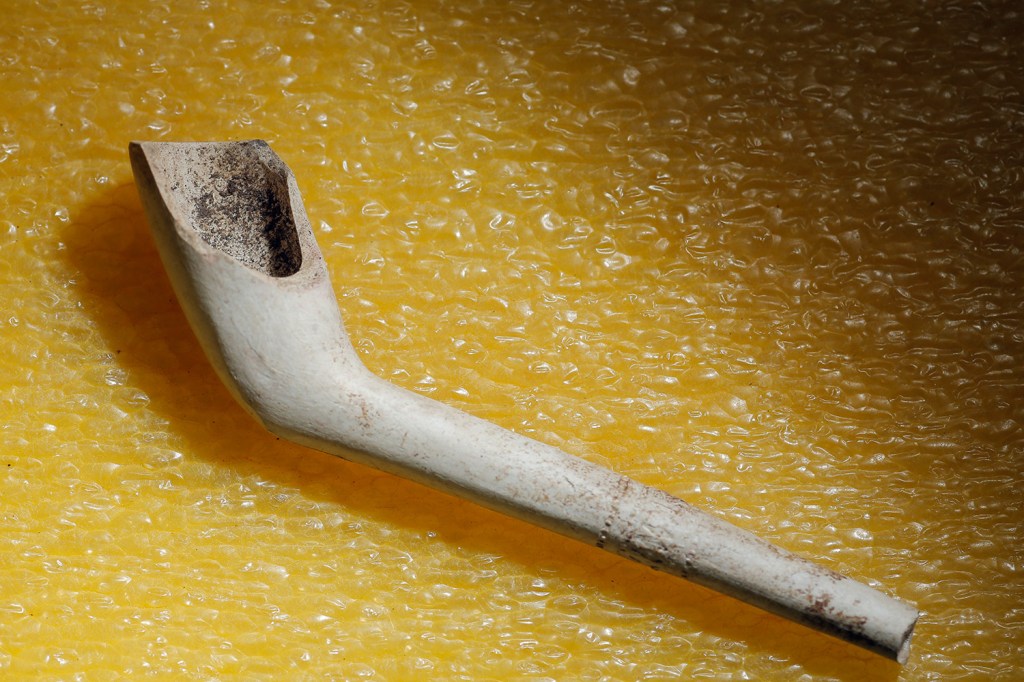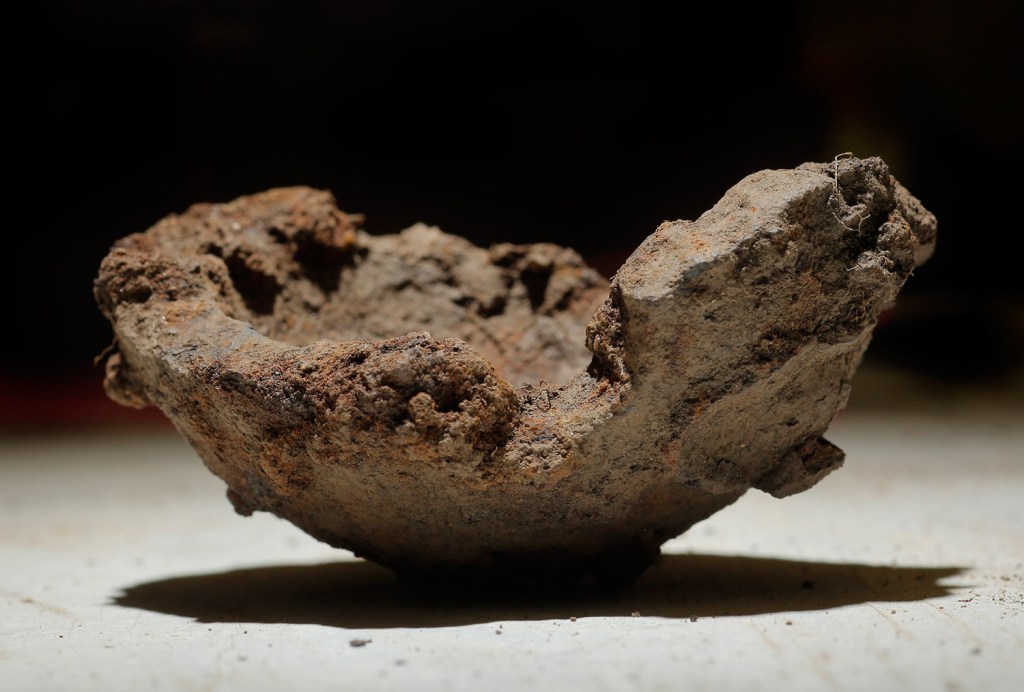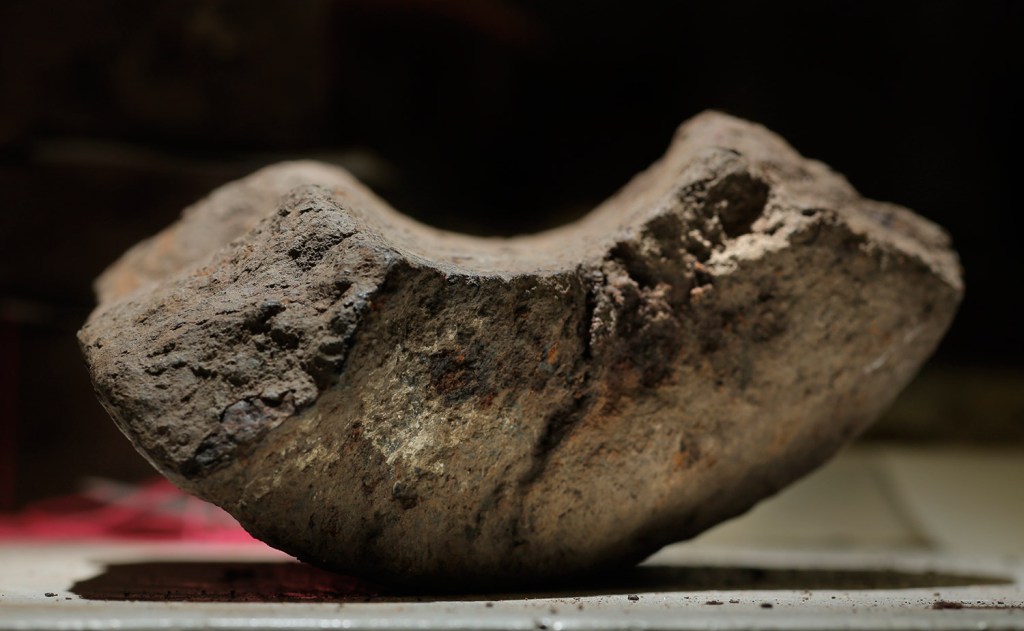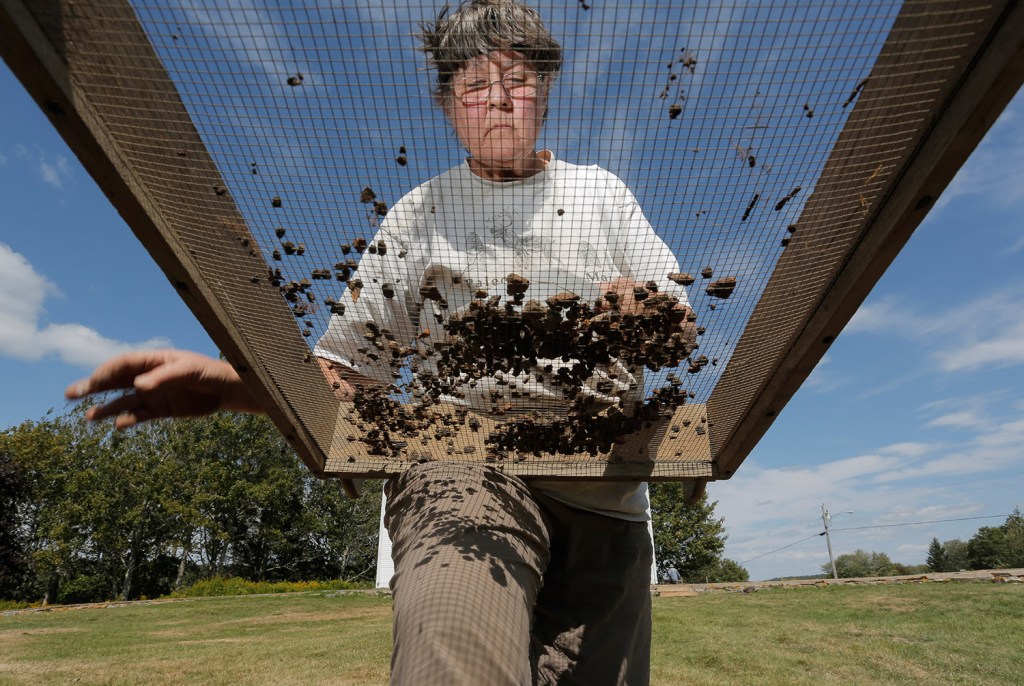BRISTOL — Historians exploring the artifact-rich grounds of Pemaquid last week uncovered a cannonball and musket balls, pipes and other remnants of early Colonial life on Maine’s coast as well as potential clues to the location of the site’s first fort.
Few places in coastal New England saw as much activity – and tragedy – as Bristol’s Pemaquid Peninsula during the 1600s as the English, the French and Native American tribes fought over the strategically important area. And unlike more famous settlements such as the Plymouth Colony and Jamestown, historians have long known the exact location of Pemaquid’s village and forts.
 So it’s not surprising that whenever archaeologists dig a hole in what is now the Colonial Pemaquid State Historic Site, they are bound to hit historical pay dirt.
So it’s not surprising that whenever archaeologists dig a hole in what is now the Colonial Pemaquid State Historic Site, they are bound to hit historical pay dirt.
“It’s such a rich archaeological resource,” said Tom Desjardin, historian and director of the Maine Bureau of Parks and Lands, which manages the site in Lincoln County on the midcoast. “The information and the knowledge is still underground. All you have to do is dig it up and look for it.”
On Friday, Desjardin and three others wrapped up a two-week dig within the stone walls of Fort William Henry, a replica built in 1908 on a spot where several forts were constructed and later destroyed. Their primary mission was to find additional evidence of the earliest English forts on the site, starting with a wooden picket or palisade fort erected on the hill overlooking Pemaquid Harbor in 1677.
And they found intriguing clues, including potential “post holes” and other evidence of wooden architectural elements buried in the rocky and clay-filled soils. Desjardin and Lee Cranmer, a retired archaeologist with the Maine Historic Preservation Commission who helped with the excavations, said it is still too early to say definitively that the wooden fort has been found. But the location of the wooden materials – such as when they are found in soil layers below those of the later stone fort walls – suggests they are on the right track.
EVIDENCE OF ENGLISH DEFEAT
“This was exciting because it didn’t match up exactly with the lines of the (stone) fort, so we know it was there before,” Desjardin said. “So either way, we know it was either the fort or villagers before the fort.”
More often, however, the team dug up the detritus of 17th century Colonial and military life in one of England’s earliest permanent settlements in North America.
“We found a lot of flint, musket balls, pistol balls and the type of things you’d expect in a fort, plus a lot of bone of cows, pigs, fish and things they would eat,” Desjardin said.
Two of the most intriguing artifact finds were a section of a cannon barrel and a hunk of hollowed-out cannonball that historians believe is likely a remnant of an early English defeat at Pemaquid.
English traders established the first settlement at Pemaquid – England’s northernmost outpost – in the mid-1620s, using the site to catch and dry cod as well as to trade for beaver pelts. As with all early settlements, Pemaquid was not an easy place to live and witnessed its share of tragedy. In 1635, for instance, the ship Angel Gabriel, carrying English settlers to New England, sank in Pemaquid Harbor during a hurricane. The settlement also was repeatedly attacked by local Indian tribes or French marauders.
After the village was destroyed in 1676 during the King Philip’s War, England built the first wooden fortification, Fort Charles, overlooking the harbor. Constructed in 1689, the undermanned fort was attacked by several French frigates along with their Indian allies.
The frigates lobbed cannonballs designed to explode above or near their targets, while Indian warriors attacked the fort from the security of a large rock outcropping underneath what is now Fort William Henry. After being convinced of the futility of resisting the larger and better-armed force, the English soldiers and settlers agreed to abandon the fort and the village, which was then ransacked and burned.
“The destruction and abandonment of Fort Charles and the Pemaquid settlement was a major victory for the Native Americans and their French allies,” reads a history of the site, prepared by the Maine Bureau of Parks and Lands. “As a result, England abandoned midcoast Maine for the next three years.”
Desjardin said that was the only recorded event of the fort coming under cannon fire, and the partial cannonball was found in the area believed to be occupied by the wooden fort.
The next fortification to be built at the site, Fort William Henry, featured stone walls standing 10 to 22 feet high along with 20 cannons and 60 soldiers. But it only lasted four years before French and Indian soldiers attacked and defeated the English forces in 1696. It would be 33 years before another stone structure, Fort Frederick, would be built on the site.
“The English kept putting in the fort and the French, with the help of the Indian (tribes), would say, ‘No, go away,’ ” Desjardin said.
In addition to animal bones and ceramic or glass shards, other artifacts found during the two-week dig included curler pins used by men to style their wigs, a British half-penny coin, eating utensils, buttons and two clay tobacco pipes dating to the 1600s. Both pipes still bear engravings of the initials of the manufacturers, which will allow the historians to more precisely date them.
ITEMS TO BE CLEANED, CATALOGUED
All of the artifacts will be cleaned and preserved to prevent further deterioration, with the best specimens potentially ending up the Colonial Pemaquid museum located near the former village site.
Cleaning and cataloging those artifacts will largely fall to Cranmer, who willingly came out of retirement to help dig at Pemaquid. Cranmer said the two-week exploration was “probably the best” of all of his digs at Pemaquid because of the information gleaned from the artifacts and walls, but also the questions they raised.
The teams mapped the site so they will know exactly where to begin digging next time to see if they can find additional post holes or other proof of the wooden fort.
Asked if he believes the new evidence suggests England’s Fort Charles has finally been located – 328 years after its destruction by French and Indian forces – the archaeologist was circumspect.
“It’s a possibility. It would be nice,” he said.
Kevin Miller can be contacted at 791-6312 or at:
Twitter: KevinMillerPPH
Send questions/comments to the editors.


